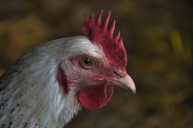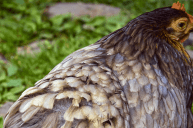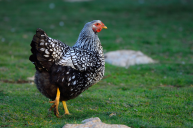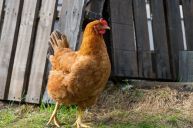Looking for a sweet, fluffy, beginner bantam? Look no further than the Buff Orpington.
The Buff Orpington chicken is a large, attractive chicken known for being docile and quiet. These Orpingtons are defined by their buff color and fluffy feathers and are also a heritage breed. Unfortunately, many heritage breeds are on the Livestock Conservancy watch list due to low flock numbers. However, in 2016 Buff Orpingtons were taken off the endangered priority list, mostly thanks to backyard hen-keepers.
Buff Orpingtons have a great temperament and are If you're interested in breeding chickens, this breed might be an excellent option. One of our writers has two Buff Orpingtons in their flock! Their brown eggs are beautiful. This cold-hardy breed of chicken is a wonderful addition to any backyard chicken keeper's chicken coop and flock.
History of the Buff Orpington
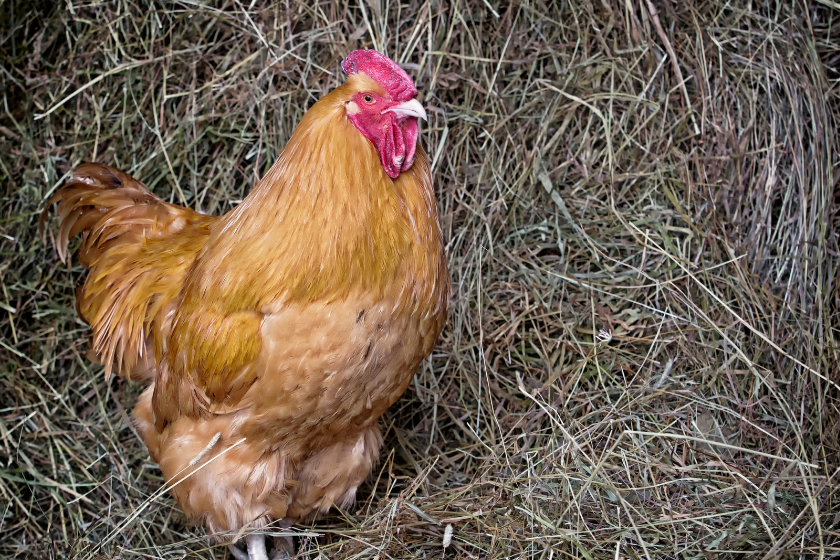
The Buff Orpington breed originated in England. The breed began during the "Hen Fever" of the 1800s, during which interest in breeding chickens peaked. William Cook crossed Minorcas, Langshans, and black Plymouth Rock Chickens to create the Orpington. The breed was named after Buff Orpington, Kent, where it was raised. While Buff Orpingtons were the third color created, they are the most popular. Orpingtons come in White, Black, Jubilee, and Spangled. A.C. Gilbert, Cook's son-in-law, bred the Blue and Cuckoo Orpingtons.
Orpington's made their way to American soil in the late 1800s. Most of them were brought over by Cook, who presented them to mid-western farmers. They were popular because they were a multi-faceted breed. Buff Orpington hens were decent layers and could be used as meat birds. The breed was recognized by the American Poultry Association for four of its colors, Buff, Black, White, and Blue.
Egg Laying and Breed Advantages

RELATED: Chicken Nesting Boxes: DIY, Care, and Why They're Important
The Buff Orpingtons are good layers but not the best on the breed list. Their egg production is about 180 eggs per year, around one egg every two days. For context, the Rhode Island Red hen lays up to 300 eggs a year and are considered excellent egg layers.
The Buff Orpington chicken is a dual-purpose bird (for both eggs and meat) with an impressive appearance. The Buff Orpington has generous plumage and does well in colder climates, making it hardy during winters. In fact, they have so many feathers, you almost can't see their legs! The skin underneath their feathers is white, and they have a single comb with red wattles and earlobes. According to Meyer Hatchery, they are quite broody, which makes them vigilant over their hatching eggs and is another reason they are considered a dual-purpose breed, just have a nesting box handy for them to care for their eggs and subsequent chicks.
Buff Orpington roosters can grow between 8.5-10 pounds and hens can be around 7-8 pounds. They are a non-aggressive breed and do best paired in the barnyard with other gentle hens like lack Australorps, Brahmas, Faverolles, Cochins, Sussexs, and Buckeyes. From experience, I can tell you they do not get along with Rhode Island Reds. It is best to keep these chicken breeds separate. This dual-purpose chicken can be raised free-range or confined, and its docile personality makes it a great choice for breeders and hobbyists alike, and are a great option for homesteaders.
Raising chickens is a blast! If you enjoy those beautiful brown eggs and egg color is a priority for you when choosing the breeds for your flock, the Buff Orpington is a great choice. Many chicken keepers try to save heritage breeds as these chickens are part of American history.
Would you raise Buff Orpingtons? Tell us on our Wide Open Pets Facebook page.
READ MORE: 5 Reasons Sussex Chickens Belong in Every Backyard Flock

